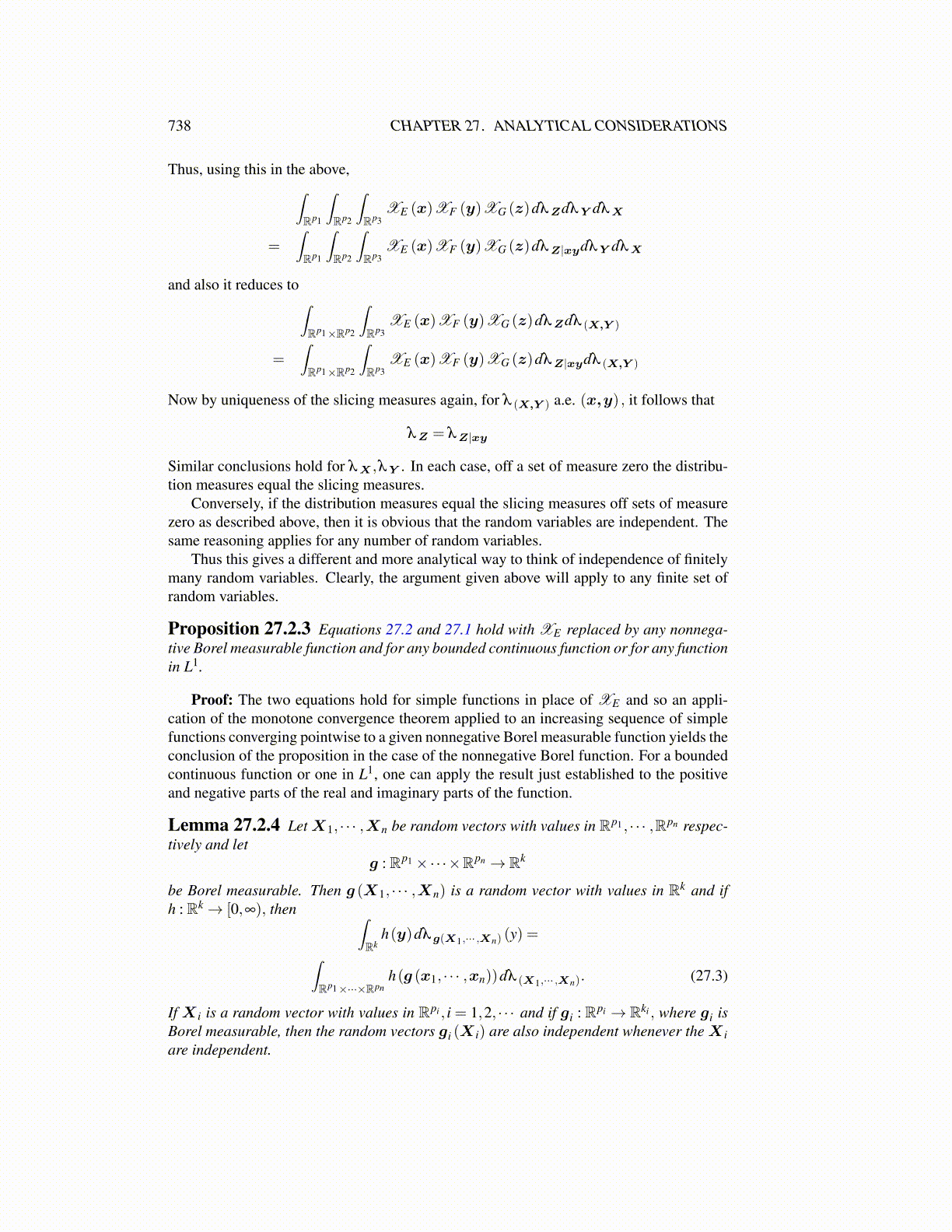
738 CHAPTER 27. ANALYTICAL CONSIDERATIONS
Thus, using this in the above,∫Rp1
∫Rp2
∫Rp3
XE (x)XF (y)XG (z)dλZdλY dλX
=∫Rp1
∫Rp2
∫Rp3
XE (x)XF (y)XG (z)dλZ|xydλY dλX
and also it reduces to∫Rp1×Rp2
∫Rp3
XE (x)XF (y)XG (z)dλZdλ (X,Y )
=∫Rp1×Rp2
∫Rp3
XE (x)XF (y)XG (z)dλZ|xydλ (X,Y )
Now by uniqueness of the slicing measures again, for λ (X,Y ) a.e. (x,y) , it follows that
λZ = λZ|xy
Similar conclusions hold for λX ,λY . In each case, off a set of measure zero the distribu-tion measures equal the slicing measures.
Conversely, if the distribution measures equal the slicing measures off sets of measurezero as described above, then it is obvious that the random variables are independent. Thesame reasoning applies for any number of random variables.
Thus this gives a different and more analytical way to think of independence of finitelymany random variables. Clearly, the argument given above will apply to any finite set ofrandom variables.
Proposition 27.2.3 Equations 27.2 and 27.1 hold with XE replaced by any nonnega-tive Borel measurable function and for any bounded continuous function or for any functionin L1.
Proof: The two equations hold for simple functions in place of XE and so an appli-cation of the monotone convergence theorem applied to an increasing sequence of simplefunctions converging pointwise to a given nonnegative Borel measurable function yields theconclusion of the proposition in the case of the nonnegative Borel function. For a boundedcontinuous function or one in L1, one can apply the result just established to the positiveand negative parts of the real and imaginary parts of the function.
Lemma 27.2.4 LetX1, · · · ,Xn be random vectors with values in Rp1 , · · · ,Rpn respec-tively and let
g : Rp1 ×·· ·×Rpn → Rk
be Borel measurable. Then g (X1, · · · ,Xn) is a random vector with values in Rk and ifh : Rk→ [0,∞), then ∫
Rkh(y)dλg(X1,··· ,Xn) (y) =∫
Rp1×···×Rpnh(g (x1, · · · ,xn))dλ (X1,··· ,Xn). (27.3)
If X i is a random vector with values in Rpi , i = 1,2, · · · and if gi : Rpi → Rki , where gi isBorel measurable, then the random vectors gi (X i) are also independent whenever theX iare independent.